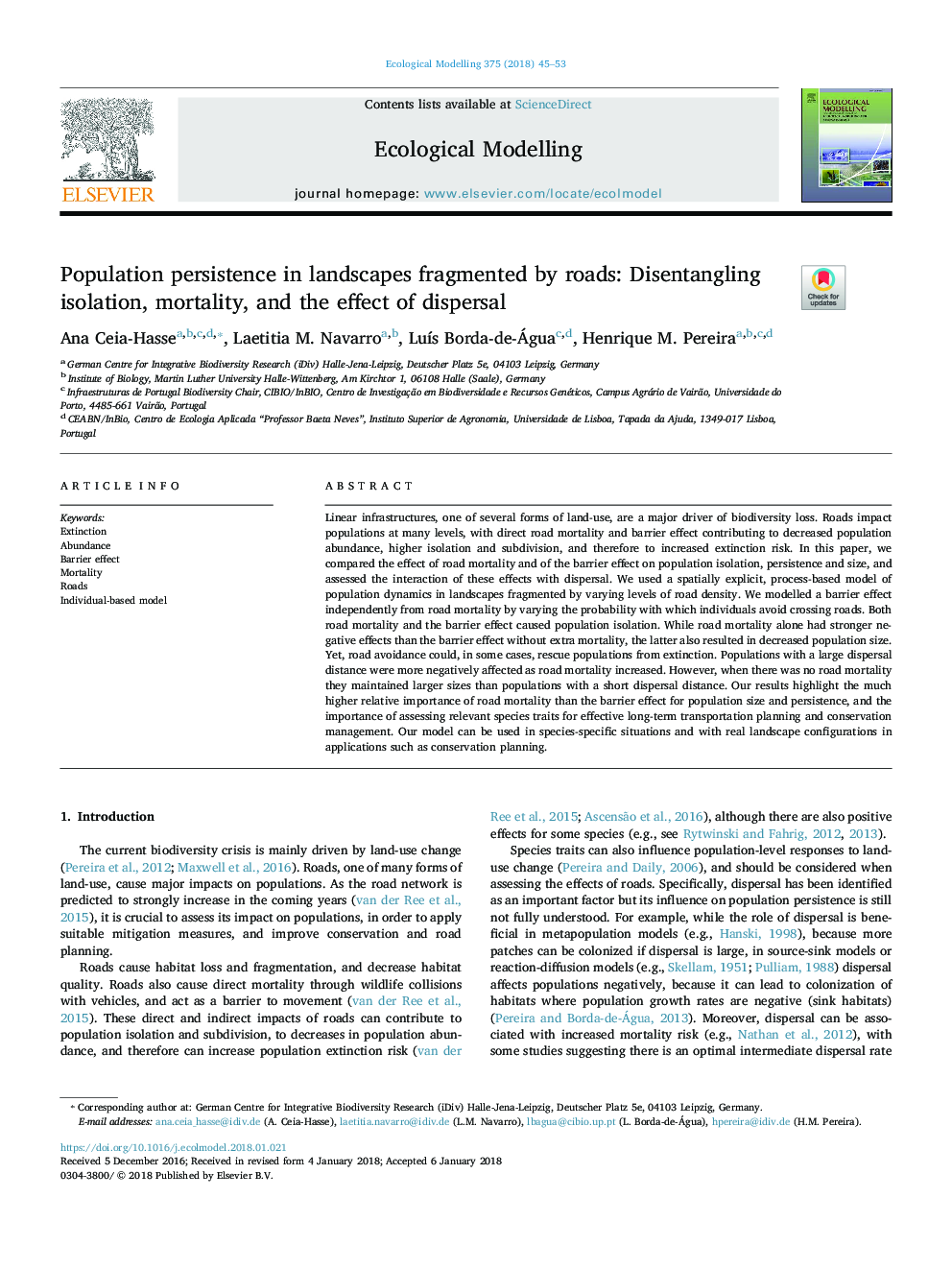| Article ID | Journal | Published Year | Pages | File Type |
|---|---|---|---|---|
| 8846072 | Ecological Modelling | 2018 | 9 Pages |
Abstract
Linear infrastructures, one of several forms of land-use, are a major driver of biodiversity loss. Roads impact populations at many levels, with direct road mortality and barrier effect contributing to decreased population abundance, higher isolation and subdivision, and therefore to increased extinction risk. In this paper, we compared the effect of road mortality and of the barrier effect on population isolation, persistence and size, and assessed the interaction of these effects with dispersal. We used a spatially explicit, process-based model of population dynamics in landscapes fragmented by varying levels of road density. We modelled a barrier effect independently from road mortality by varying the probability with which individuals avoid crossing roads. Both road mortality and the barrier effect caused population isolation. While road mortality alone had stronger negative effects than the barrier effect without extra mortality, the latter also resulted in decreased population size. Yet, road avoidance could, in some cases, rescue populations from extinction. Populations with a large dispersal distance were more negatively affected as road mortality increased. However, when there was no road mortality they maintained larger sizes than populations with a short dispersal distance. Our results highlight the much higher relative importance of road mortality than the barrier effect for population size and persistence, and the importance of assessing relevant species traits for effective long-term transportation planning and conservation management. Our model can be used in species-specific situations and with real landscape configurations in applications such as conservation planning.
Related Topics
Life Sciences
Agricultural and Biological Sciences
Ecology, Evolution, Behavior and Systematics
Authors
Ana Ceia-Hasse, Laetitia M. Navarro, LuÃs Borda-de-Água, Henrique M. Pereira,
